Publication process
Idea
The cycle begins with the authors deciding on what topic they wish to publish about. This can be a very quick step for some authors, who decided on a topic and develop it more later in the process, or the author can take a large amount of time fully developing a complete idea.
Research
This is when authors take their ideas and find out all the information that is readily available. For scientific publication, this includes previously done experiments as well as conducting more experiments that focus mainly on the chosen topic. For literary authors, this step includes reading previous publications and to seeing if any other authors have published work similar to theirs.
Informal communication is when authors get together and exchange ideas without there being any formal purposes or any structured agenda to guide them along. This includes dinners, going to the bar, phone calls, parties, and small gatherings.
Idea protection
Idea protection is when authors formalize their ideas and reserve their rights to them. This includes patents, copyright, trademark, registered trademarks, and creative commons. It is important for authors to protect their work so that others do not take credit for their work.
Report findings
This can be done in many different ways. There are formal reports, such as lab reports, research documents, and other white paper publications. Informal versions include posts on personal web pages, blogs, and new forms like facebook posts.
Conferences
These meetings include both formal and inform forms of communication and are great ways not only to present your findings but also begin the cycle. Presentations and discussions are held to publicize research.
Magazines and newspapers
One of the more public and common types of publications, these are one of the most popular types of printed publications. These are used at many levels such as small towns, college campuses, and regional or national levels.
Journal articles
These vary a lot throughout their process, but they generally have the same objective in mind: to present an idea or position These can range from a personal to corporate journal and have many various subjects. Depending on the level, the journal article may be peer-reviewed by others in the field or a dedicated editing staff.
- Examples
- The Wall Street Journal
- Personal Diary
Book publication
This is possibly one of the longest processes due to the many levels of review that go into the production of a book. There are usually many editions of books because each must be reviewed and revised before it actually goes into production. Also, many revisions to manuscripts may be made because of grammatical errors or a focus that needs to be fleshed out in more detail.
Government documents
There are many varieties of these documents. They can range from bills, deeds, constitutions or government contracts. These carry the most complexity with them because it must be kept updated regularly to reflect the current version of the document. Amendments to government documents make these documents have a longer publication cycle than most other documents because they must constantly be revised and it has to publicly be known that an amendment has been added and usually there are a series of checks these documents must pass through before their publication cycle has ended.

A book is a medium for recording information in the form of writing or images. Modern books are typically in codex format, composed of many pages that are bound together and protected by a cover; they were preceded by several earlier formats, including the scroll and the tablet. The book publishing process is the series of steps involved in their creation and dissemination.

Research is "creative and systematic work undertaken to increase the stock of knowledge". It involves the collection, organization, and analysis of evidence to increase understanding of a topic, characterized by a particular attentiveness to controlling sources of bias and error. These activities are characterized by accounting and controlling for biases. A research project may be an expansion of past work in the field. To test the validity of instruments, procedures, or experiments, research may replicate elements of prior projects or the project as a whole.

In academic publishing, a scientific journal is a periodical publication designed to further the progress of science by disseminating new research findings to the scientific community. These journals serve as a platform for researchers, scholars, and scientists to share their latest discoveries, insights, and methodologies across a multitude of scientific disciplines. Unlike professional or trade magazines, scientific journals are characterized by their rigorous peer review process, which aims to ensure the validity, reliability, and quality of the published content. With origins dating back to the 17th century, the publication of scientific journals has evolved significantly, playing a pivotal role in the advancement of scientific knowledge, fostering academic discourse, and facilitating collaboration within the scientific community.

A topic map is a standard for the representation and interchange of knowledge, with an emphasis on the findability of information. Topic maps were originally developed in the late 1990s as a way to represent back-of-the-book index structures so that multiple indexes from different sources could be merged. However, the developers quickly realized that with a little additional generalization, they could create a meta-model with potentially far wider application. The ISO/IEC standard is formally known as ISO/IEC 13250:2003.
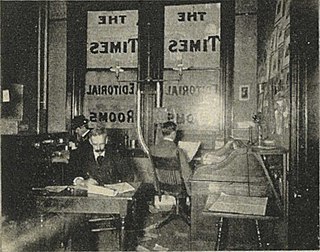
Editing is the process of selecting and preparing written, visual, audible, or cinematic material used by a person or an entity to convey a message or information. The editing process can involve correction, condensation, organization, and many other modifications performed with an intention of producing a correct, consistent, accurate and complete piece of work.
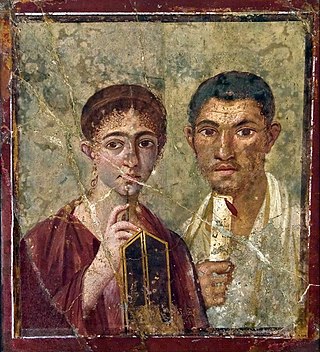
In the study of history as an academic discipline, a primary source is an artifact, document, diary, manuscript, autobiography, recording, or any other source of information that was created at the time under study. It serves as an original source of information about the topic. Similar definitions can be used in library science and other areas of scholarship, although different fields have somewhat different definitions.
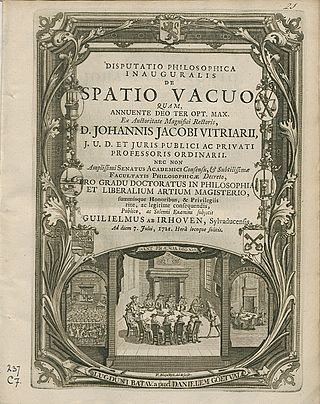
A thesis, or dissertation, is a document submitted in support of candidature for an academic degree or professional qualification presenting the author's research and findings. In some contexts, the word thesis or a cognate is used for part of a bachelor's or master's course, while dissertation is normally applied to a doctorate. This is the typical arrangement in American English. In other contexts, such as within most institutions of the United Kingdom and Republic of Ireland, the reverse is true. The term graduate thesis is sometimes used to refer to both master's theses and doctoral dissertations.

Academic publishing is the subfield of publishing which distributes academic research and scholarship. Most academic work is published in academic journal articles, books or theses. The part of academic written output that is not formally published but merely printed up or posted on the Internet is often called "grey literature". Most scientific and scholarly journals, and many academic and scholarly books, though not all, are based on some form of peer review or editorial refereeing to qualify texts for publication. Peer review quality and selectivity standards vary greatly from journal to journal, publisher to publisher, and field to field.
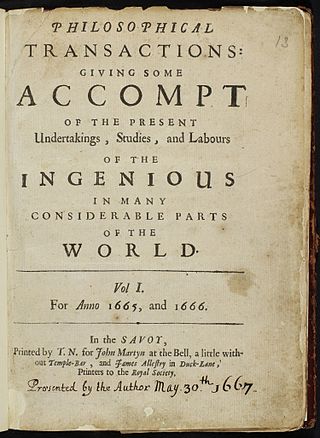
Scientific literature encompasses a vast body of academic papers that spans various disciplines within the natural and social sciences. It primarily consists of academic papers that present original empirical research and theoretical contributions. These papers serve as essential sources of knowledge and are commonly referred to simply as "the literature" within specific research fields.
An abstract is a brief summary of a research article, thesis, review, conference proceeding, or any in-depth analysis of a particular subject and is often used to help the reader quickly ascertain the paper's purpose. When used, an abstract always appears at the beginning of a manuscript or typescript, acting as the point-of-entry for any given academic paper or patent application. Abstracting and indexing services for various academic disciplines are aimed at compiling a body of literature for that particular subject.
An outline, also called a hierarchical outline, is a list arranged to show hierarchical relationships and is a type of tree structure. An outline is used to present the main points or topics (terms) of a given subject. Each item in an outline may be divided into additional sub-items. If an organizational level in an outline is to be sub-divided, it shall have at least two subcategories, although one subcategory is acceptable on the third and fourth levels, as advised by major style manuals in current use. An outline may be used as a drafting tool of a document, or as a summary of the content of a document or of the knowledge in an entire field. It is not to be confused with the general context of the term "outline", which a summary or overview of a subject, presented verbally or written in prose. The outlines described in this article are lists, and come in several varieties.
An article or piece is a written work published in a print or electronic medium, for the propagation of news, research results, academic analysis or debate.
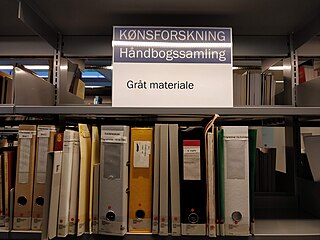
Grey literature is materials and research produced by organizations outside of the traditional commercial or academic publishing and distribution channels. Common grey literature publication types include reports, working papers, government documents, white papers and evaluations. Organizations that produce grey literature include government departments and agencies, civil society or non-governmental organizations, academic centres and departments, and private companies and consultants.
A source text is a text from which information or ideas are derived. In translation, a source text is the original text that is to be translated into another language.
Scholarly communication involves the creation, publication, dissemination and discovery of academic research, primarily in peer-reviewed journals and books. It is “the system through which research and other scholarly writings are created, evaluated for quality, disseminated to the scholarly community, and preserved for future use." This primarily involves the publication of peer-reviewed academic journals, books and conference papers.

A review article is an article that summarizes the current state of understanding on a topic within a certain discipline. A review article is generally considered a secondary source since it may analyze and discuss the method and conclusions in previously published studies. It resembles a survey article or, in news publishing, overview article, which also surveys and summarizes previously published primary and secondary sources, instead of reporting new facts and results. Survey articles are however considered tertiary sources, since they do not provide additional analysis and synthesis of new conclusions. A review of such sources is often referred to as a tertiary review.
Legal research is the process of identifying and retrieving information to support legal arguments and decisions. Finding relevant legal information can be challenging and may involve the use of electronic research tools as well as printed books and materials. However, many resources that are useful for legal research are fee-based, and many are not easily accessible.

In scholarship, a secondary source is a document or recording that relates or discusses information originally presented elsewhere. A secondary source contrasts with a primary, or original, source of the information being discussed. A primary source can be a person with direct knowledge of a situation or it may be a document created by such a person.
Scholarly peer review or academic peer review is the process of having a draft version of a researcher's methods and findings reviewed by experts in the same field. Peer review is widely used for helping the academic publisher decide whether the work should be accepted, considered acceptable with revisions, or rejected for official publication in an academic journal, a monograph or in the proceedings of an academic conference. If the identities of authors are not revealed to each other, the procedure is called dual-anonymous peer review.
An authors' editor is a language professional who works "with authors to make draft texts fit for purpose". They edit manuscripts that have been drafted by the author but have not yet been submitted to a publisher for publication. This type of editing is called author editing, to distinguish it from other types of editing done for publishers on documents already accepted for publication: an authors' editor works "with an author rather than for a publisher". A term sometimes used synonymously with authors' editor is "manuscript editor" which, however, is less precise as it also refers to editors employed by scholarly journals to edit manuscripts after acceptance.









